#paris 1810
Text
The Metternichs about Junot
Metternich to Mme Metternich, 14 February 1810
It is with true sorrow that I take up my quill today. Your letter of 26 January contains one of the scenes that show us the people of 1792 and 1793 exposed and naked. Place a being like J[unot] in a very high position, he will drink blood without letting any misgivings stop him.
That’s Metternich reacting to the news of the scandal Junot had caused after having discovered the correspondence between his wife Laure and Metternich, proving they had had an affair. Metternich himself was not in Paris at the time but had left some time after the war of 1809 between France and Austria had begun, and in the meantime had taken over the ministry of foreign affairs in Austria. However, Lorel Metternich with the kids had stayed in Paris, and Junot had dragged her right in the middle of a scene of severe domestic violence that she immediately informed her husband of, with the help of a secret agent Metternich had in Paris, Benoit des Androuins.
Interestingly, Lorel Metternich at first does not mention any involvement of Caroline Murat in this event, she only lists her as one of the people gossipping about it.
Other than that, Lorel apparently behaved as prudently as she could once she had entered Junot’s house. According to the letter by Androuins, Junot had forced Laure to write a message to Lorel, urgently inviting her over. On entering, Lorel found Laure Junot crying on the sofa, hiding her face in both hands. - According to Laure’s own journal intime, the last hours had been a nightmare for her, including attempted rape and attempted murder. - Once Lorel Metternich was in the room, Junot locked the door behind both women and started to rage against Metternich, demanding Lorel take revenge upon him etc. The only thing Lorel answered was: "But you are mistaken, Monsieur le Duc. This is not my husband’s handwriting." - Despite the fact she had obviously recognized it. Again, according to Laure’s journal intime, she at some point managed to silently ask Laure if she could do something for her.
Despite Lorel’s calm reaction, the scene must have scared her a lot. At least she seems rather relieved to learn that the Junots were to leave the capital, when she writes to her husband:
Bluebeard has finally left with his amazon and, as I am assured, probably never to return.
"Bluebeard" obviously referring to Junot.
Edit: Forgot to add the source for the two letters: Conti, "Metternich und die Frauen", Vol. 1 - The description of what may (or not) have happened during the night when Laure was alone with Junot are a brief summary of the excerpts from Laure's "journal intime" quoted in Toussaint du Wast, "Laure Junot". It is to be noted that this "journal intime" may have been written years after the event for Balzac, and that it is per se unverifiable.
However, Lorel Metternich calling Junot "Bluebeard" at least strongly hints at her, too, being convinced that Junot had physically abused and possibly tried to murder Laure.
Edit II: On second reading, I added an "attempted" to the accusation of rape. Of course, by the reasoning of the law at the time, rape in the judicial sense would not even have been possible between spouses. Obeying to the husband's needs was the wife's job. - As to Laure's "journal intime", she describes that Junot tried to force himself on her, but claims that she managed to make him stop. (I am not sure I fully believe her.) Junot then at some point attacked her with a pair of scissors, wounding her, before trying to strangle her. He only stopped when Laure was close to loosing consciousness and when he literally saw her blood on his hands. That's how Madame Metternich found Laure on entering.
43 notes
·
View notes
Text
Napoleon and Water
Excerpt from the book Aaron Burr in Exile: A Pariah in Paris, 1810-1811, by Jane Merrill and John Endicott
Aaron Burr lived in Paris for 15 months, and this book goes into detail about those years living under Napoleon’s rule. This part focuses on Napoleon’s water related reforms.
———
Napoleon’s fountains gave drinking water to the population, that is, children drank water, not beer. The water was free, not purchased. And the apartment would have had a separate water closet equipped with squat toilets (adopted from the Turks) and a bucket to wash it after use. Some restaurants and cafes had W.C.s, even one for ladies and one for gents. These were hooked into the sewer system that branched under each important street.
Napoleon merits points for delivering fresh water to Paris. If serving Paris with water from the d'Ourcq River by canals was not be a consummate success, Paris gained 40 new fountains, and the emperor commanded that fountains run all day (instead of a few limited hours) and that the water be free of charge.
Perhaps the most laudable of Napoleon’s policies were utilitarian city works, especially bringing clean water and sanitation to Paris. The improvements to infrastructure included new quays to prevent floods, new gutters and pavement, new aqueducts and fountains, and relocating cemeteries and slaughterhouses to the outskirts of the city. This was also a way of keeping up employment. An Austrian aristocrat in town during Napoleon’s wedding to Marie-Louise wrote his mother, in Vienna: “Nothing can give an idea of the immense projects undertaken simultaneously in Paris. The incoherence of it is incredible; one cannot imagine that the life of a single man would be enough to finish them.”
It was a tall order. Previous rulers had been aware of the problems and one big engineering initiative, a failed marvel, had been the waterworks at Marly, located on the banks of the Seine about seven miles from Paris. Louis XIV had it constructed to pump water from the river to his chateaux of Versailles and Marly. This was the machine marvel of its age, with 250 pumps that forced river water up a 500-foot rise to an aqueduct, and it was a sight Burr mentions going to see. By 1817 the “Marly machine” had deteriorated because it was made of wood, and the waterworks were abandoned.
Charles-Augustin Sainte-Beuve, the prominent 19th century literary critic, wrote that there had been “ten years of anarchy, sedition and laxity, during which no useful work had been undertaken, not a street had been cleaned, not a residence repaired nothing improved or cleansed.” Postrevolutionary Paris was at a nadir in terms of both the inadequate, disease-ridden water supply and the filthy streets, which were basically open sewers, deep with black mud and refuse.
“Napoleon,” writes Alistair Horne, “was obsessed by the water of Paris, and everything to do with it.”
Parisians had mostly been getting their water directly from the Seine or lining up at the scant pay fountains. In 1806, nineteen new wells for fountains were dug that flowed day and night and were free. Napoleon had a canal built 60 miles from the River Ourcq, ordering 500 men to dig it, while still a consul in 1801. It brought water to the Bassin de la Villette, opening in 1808. Some doubted the wisdom of having such an abundance of water—an oriental luxury that might incur moral decay. Now the supply of water for firefighting was also much improved. The canal had light boats, as Napoleon tried to make back some of the huge expenditure by licensing navigation, and a circular aqueduct from which underground conduits went to the central city. In 1810, there were still many water porters wheeling barrels through the city.
Now Napoleon attacked the problem of the Seine as a catchall for pollution. Parisians were so used to it that men swam naked in the river and a contemporary guidebook advised merely that the water of the Seine had no ill effects on foreigners so long as they drank it mixed with wine or a drop of vinegar. Thus houses on bridges were demolished and an immense push began to clean and modernize the city sewers.
As this book is about Aaron Burr, here is section about Burr taking inspiration by a new water related invention during his time in Paris:
Remarkably for someone who was very aware of his health, he never complained of the water. He did, however, take an interest in an invention to make it easier to dig a well. When the inventor of a process to make vinegar from the sap of any tree was not in his shop, Burr and a friend, “Crede”, went to see another invention: “We went then to see Mons. Cagniard, and his new invention of raising water and performing any mechanical operation. His apparatus is a screw of Archimedes turned the reverse, air, water, and quick silver. Cagniard was abroad; but we saw a model, and worked it, and got the report of a committee of the Institute on the subject. If the thing performs what is said I will apply it to give water to Charleston.”
[Bold italics for quotations by me]
#Aaron Burr in Exile: A Pariah in Paris 1810-1811#Aaron Burr#Jane Merrill#John Endicott#napoleon#napoleonic era#napoleonic#napoleon bonaparte#first french empire#french empire#19th century#france#history#Paris#french history#water#water history#Napoleon’s reforms#social reforms#social history#reforms#napoleonic reforms
100 notes
·
View notes
Text
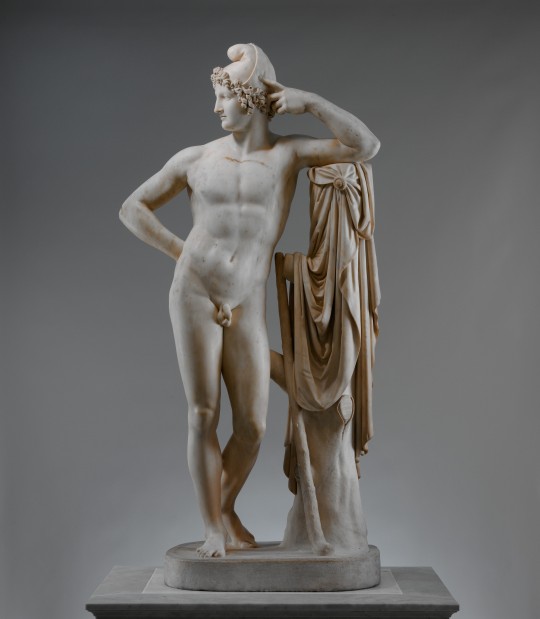
1807-1812, Antonio Canova, Paris
#Antonius Canova#Antonio Canova#Paris#saec. XIX#1807#1810#1812#sculptura#Museum Gipsoteca Antonio Canova#Pusagni#OQ2SL2Q
20 notes
·
View notes
Text


White Silk Muslin Dress, 1804-1814, French.
Musée des Arts Décoratifs Paris.
#white#silk#muslin#19th century#1804#1800s#1810s#1800s France#1810s France#extant garments#womenswear#dress#france#French#first empire#musée des arts décoratifs paris#mad paris#1800s dress#1810s dress
8 notes
·
View notes
Text

Unknown Artist, 'Portrait of a Lady with a Pearl Necklace', oil on canvas, c.1810, French, for sale for est. 2,000-3,000 EUR at Tajan, Paris, France.
49 notes
·
View notes
Note
" W-where am I? " (from Esmeralda. had to send this from her too)
Due to new restrictions in France for travel to stamp out witchcraft and sorcery, the need for secrecy, and his own unwillingness to allow his body to get worse— Mozenrath decided to set up shop in the sectioned off Parisian catacombs. Fitting for a necromancer, and certainly a hazard for any guard to go searching through. Though it wasn't exactly his first choice.
“Consider this my… defacto laboratory,” he gestured to the surroundings, where blue fire lit up with the wave of his hand. Casting an eerie green glow over row after row of yellowed human skulls in the upmost quadrant of the walls. Where a few wooden tables stood in the centre with the active, alchemical equipment, bubbling and distilling. And where a stainless steel table stood a small distance away, with a bloated dead body lying on top.
Thankfully, there wasn't any smell beyond the mustiness of the underground catacombs.
#in character ask#mozenrath#rp ask#the Paris catacombs were established in 1810#while the Hunchback of Notre Dame is set in the 15th century#so this isn’t historically accurate#though if it was I think Esme would’ve seen at least some of it
4 notes
·
View notes
Text
ok next time i talk about jaubrey as if it's a real thing that's out there with multiple acts and is about to start wrapping up it's final arc when i haven't even started to write tiffany yet and also only know what half it's characters look like, take me out back and shoot me like a lame horse, that being said, nonzero chance that (at least) years after jaubrey is over and done with i'll make a jehanne spinoff
#was adding to my notes on her bc i reconfigured a few things to make more logical sense and fall apart less easily and i realized#that she does kinda end up slotting herself into the 'main villain' role. which makes me sad bc she's my specialest favoritest girlboss#and i thought raejin was most likely to end up with that role but no matter his actions he can't bc. fundamentally. all his actions will#be looked through with rose colored glasses bc one of the protagonists is in love w him (and another is his close family)#and he wasn't around to participate in the great 'screwing-each-other-over' olympics in the 1810s arc#while jehanne was. and even though she was like. the least bad of the 'bad people doing bad people things'#(i'm just SAYING that at the very end erik literally murdered jack. livia and mariana left without him. takehira did too but he lied about#it and everything. kyusong sat back and made popcorn. and jehanne was the only one to offer jack any chance of survival even if he#didn't take it. hubris is a hell of a drug)#and jehanne isn't in the second or most of the third act bc it'd fuck over the entire modern-day plot to reintroduce her too early#so ig that'd probably allow some mental distance to grow between her and the reader#even though she's like. not worse than oh idk erik and her actions between the 1st and 2nd acts are caused by the exact same#blend of trauma. grief. guilt and paranoia. he's a protagonist while she's just a really prominent side character who's off in new orleans#or paris for the vast majority of the story despite her significance#romeo.txt
2 notes
·
View notes
Text
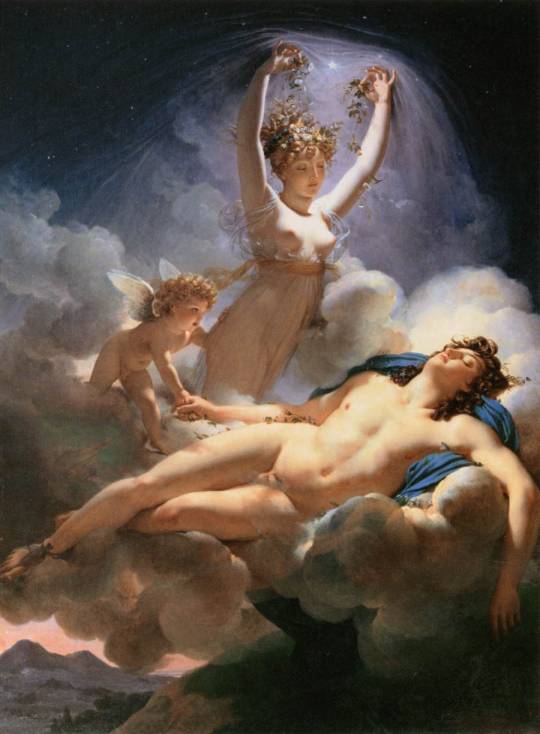
GUÉRIN, Pierre-Narcisse
Aurora and Cephalus
1810
Oil on canvas, 254 x 186 cm
Musée du Louvre, Paris
163 notes
·
View notes
Photo
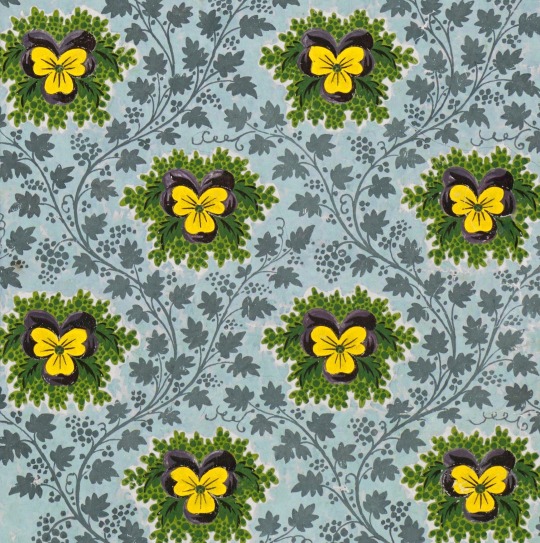
Papier à motif répétitif - Joseph Dufour - c.1810-1815 - via Paris bibliotheques
291 notes
·
View notes
Text
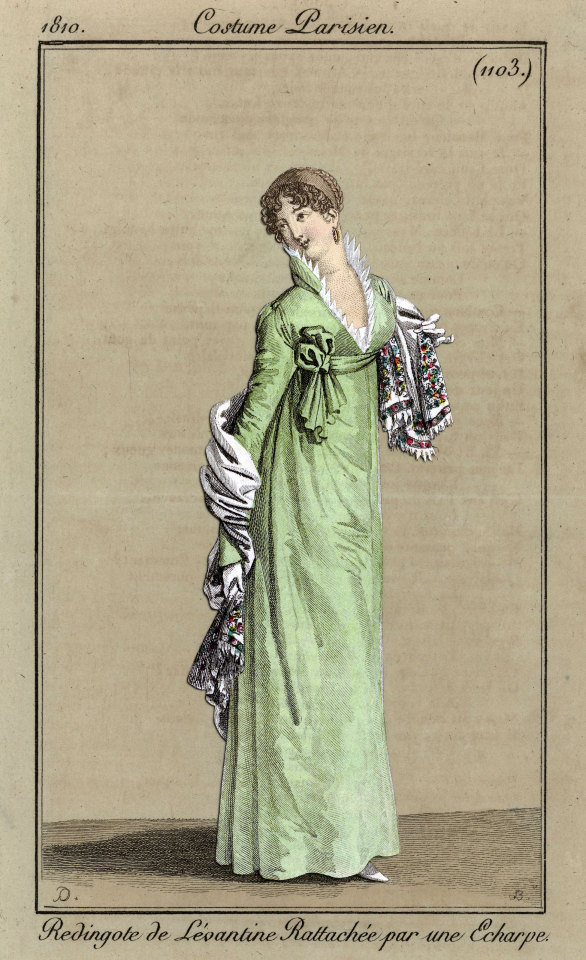
Journal des Dames et des Modes, Costume Parisien, 20 novembre 1810, (1103): Redingote de Lévantin Rattachée par une Echarpe. Collection of the Rijksmuseum, Netherlands
Standing woman dressed in a 'redingote de Lévantine', fastened with a scarf (belt) of the same material. Stand-up serrated collar. Scarf, with fringes at the ends. Further accessories: earring in the left ear, pointed toe shoe. The print is part of the fashion magazine Journal des Dames et des Modes, published by Pierre de la Mésangère, Paris, 1797-1839.
#Journal des Dames et des Modes#19th century#1810s#1810#on this day#November 20#periodical#fashion#fashion plate#color#description#rijksmuseum#dress#redingote#collar#Mésangère
71 notes
·
View notes
Text

French States Dinghy built in Antwerp in 21 days for Napoleon I in 1810, who had announced his intention to visit the mouths of the Scheldt and Antwerp's defense works. The Emperor only used this vessel once, on this occasion. It was over 18 meters long: the aft third was dominated by a spacious deckhouse designed to accommodate VIPs, while the oarsmen took up the rest of the space.
It was then transported to Brest and used a second time by Napoleon III in August 1858, when he visited the arsenal, and again in 1903, when the President of the Republic visited. In November 1922, it was launched again for the Minister of the Navy, Raiberti, on the occasion of the "Triumph of the Naval School".
Finally, in 1943, it was transported to the Palais de Chaillot in Paris.
66 notes
·
View notes
Text
Stuck with Napoleon (almost)
In late 1809/early 1810 Eugène's father-in-law Max Joseph, king of Bavaria, and queen Karoline visited Paris and so had ample opportunity to witness the preparations for Napoleon's re-marriage first-hand. Though, as Ménéval relates in Volume 2 of the "Mémoires pour servire à l'histoire de Napoleon Premier", sometimes their curiosity got the better of them:
I recall that the King and Queen of Bavaria, having come during the day to visit the Emperor, wished to see the appartment intended for the new Empress. Napoleon, treating them with a familiarity that suited the king perfectly, wanted to spare them the trouble of leaving the salon where he had received them, in order to reach by the grand staircase the ground floor where the Empress's appartment was situated. He led the Bavarian sovereigns through his cabinet and took them down the small winding staircase which communicated with this appartment. The light in this staircase had been turned off, because the appartment was not inhabited. At the same time it was so narrow that the stout build of the King of Bavaria was ill at ease there, and forced him to turn sideways. The darkness prevailing there excited some surprise; but, when we reached the bottom of the staircase, it happened, to make matters worse, that the door was locked... The embarrassment was great. I preceded Their Majesties, the Emperor followed me, then the Queen and finally the King. The Emperor seemed to have lured them into an ambush, and if we had been in the Middle Ages, what sinister ideas would no doubt have occurred to the King and Queen! The King of Bavaria exclaimed that if one knew in what situation the Emperor Napoleon was with his guests, one would be very surprised. At last we had to go back in reverse order, and the visit to the Empress's rooms had to be postponed to another day. This little event had left its mark on the king's mind, for he did me the honour of telling me about it long afterwards, saying that he felt like laughing every time he thought of it.
The only thing missing from that story is, while the four were making their way downstairs, some servant noticing the open secret door in Napoleon's cabinet and locking it for security reasons.
13 notes
·
View notes
Text
Napoleon and Sewers and Sanitation
Excerpt from the book Aaron Burr in Exile: A Pariah in Paris, 1810-1811, by Jane Merrill and John Endicott
Napoleon began in 1805 to build a modern vaulted underground sewer system in Paris, following the topography of the streets. Practical changes for the better were already in place when Burr was in Paris. Sewer floors were lowered and new lines were created everywhere between 1805 and 1812, while at the same time the existing sewers were disinfected and the flow of water purified.
During the Enlightenment there was a movement for improved hygiene in France, and investigations of public health. Napoleon was a forerunner of hygiene for his armies and for Paris. In the first place he paved streets and did away with the flowing gutters in the middle of the road. Second, he wanted to give Parisians clean water. In 1802, he commissioned Pierre-Emmanuel Bruneseau as his inspector of works for the City of Paris to chart the sewer system and also keep them clean. Under Napoleon, the existing network was extended, 19 new miles of sewers were added. By 1812, vast improvements had been made.
Bruneseau died in 1819, but Baron Haussmann studied Bruneseau’s maps in the mid-century, rebuilding, constructing new gas-lit and vented sewers. The sanitation models of Paris were adopted by other cities in France and around the world.
A survey of 50 kilometers took seven years. It was dangerous as well as putrid work. While Bruneseau was hailed as an intrepid adventurer, he had difficulty all along with hiring assistants to keep up with him. Victor Hugo was Bruneseau’s friend and hailed him as an adventurer. The engineer inspired Hugo to write the portion of Les Misérables in which Jean Valjean carries Marius, wounded at the Barricades in 1832, through the sewers to safety. Hugo called the sewers “the conscience of the city” and created a whole metaphor around the sewer system: “A sewer is a cynic. It tells everything.” It wouldn’t have been possible for Jean Valjean to make his way carrying Marius through the sewers before the curage methods introduced by Bruneseau. The rushing water when gates are opened to clean the sewers with great hydraulic force, as well as the manholes and dripping pipes, are well described in the novel.
[Bold italics for quotations by me]
#napoleon#Pierre-Emmanuel Bruneseau#victor Hugo#Hugo#Les mis#Les Misérables#Bruneseau#napoleonic era#napoleon bonaparte#Aaron Burr#Burr#Aaron Burr in Exile: A Pariah in Paris 1810-1811#Paris#France#sewers#french history#history#first french empire#french empire#19th century#napoleonic#Baron Haussmann#Haussmann#napoleonic reforms#reforms#Napoleon’s reforms
45 notes
·
View notes
Text

Alfred de DREUX Paris, 1810 - 1860
Amazon in black on a pommel grey horse
Oil on canvas (Original canvas)
Artcurial
70 notes
·
View notes
Photo

La Violette de Mars (The March Violet) by Nicolas-François Regnault (1746-1810). Paris, 1774.
Image and text information courtesy NYPL Digital Collection.
169 notes
·
View notes
Text
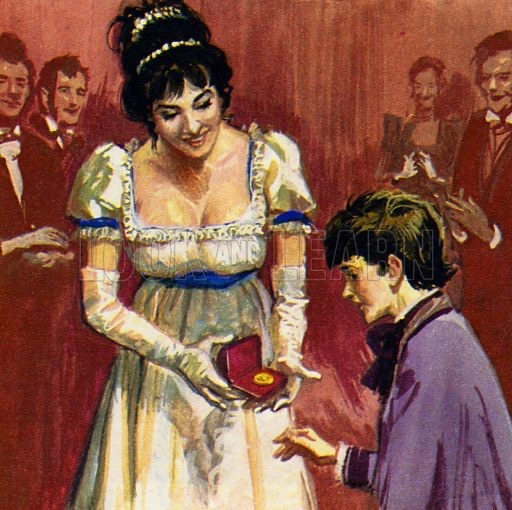
Frederic Chopin was born in Warsaw, Poland, in 1810. Chopin showed a talent for music and a famous singer was so impressed she gave him an especially inscribed medal.

During a banquet, friends gave Chopin a silver goblet filled with the earth of his native land.

Chopin played mostly in the salons of the rich.

Chopin's life was dogged by illness and unhappiness.

George Sand (Amandine Dupin) took Chopin to a house in Nohant, France, where he continued to compose.
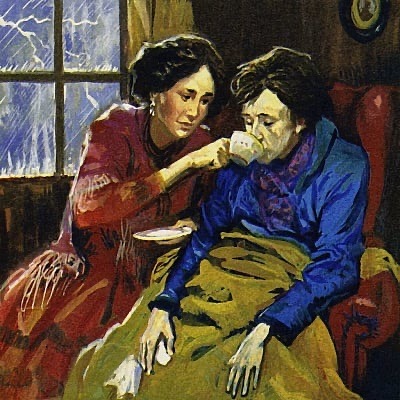
Chopin was nursed by the novelist George Sand when he fell ill.

Chopin became so ill in Scotland he had to be carried upstairs. He returned to Paris.

Chopin fell ill again in 1849. George Sand (Amandine Dupin) tried to see him but was turned away by a friend.
From the British children’s educational magazine, ‘Look and Learn’, published from 1962 until 1982.
81 notes
·
View notes